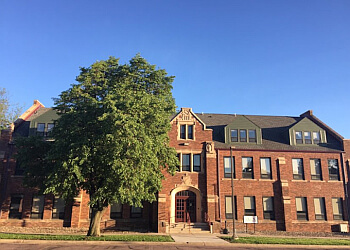Watsu: The Origin Of Chiropractic Warts

Asking a non-professional Asian bodyworker what the difference is between watsu and massage could lead to confusion and possibly misguided advice on how to do the watsu. However, the differences between the two are actually quite clear-cut. 출장안마 Before you begin your own personal practice, it's worth learning the basics so you can distinguish between the many types of watsu.
Watsu is also known by the names Japanese Shiatsu or Watsu massage. It is a kind of therapeutic bodywork that is hands-on and utilized mainly for passive and deep stretching. Watsu usually involves one-on-one private sessions where a therapist or practitioner gently cradles or manipulates, stretches or gently massays a receiver in warm, body-professed and warm water. The goal is to clear energetic channels, eliminate tension from the body, and restore flexibility, ease stiffness and decompress the recipient.
Watsu is not like other types of bodywork that concentrates on a specific part of the body. This gentle form of bodywork utilizes the hands and fingers of practitioners to treat different muscles. Many who have experienced this kind of treatment have described it as like having a gentle massage but without the stress and pressure of massage therapy. While some therapists utilize a mixture of touch and manipulation to achieve results, a lot of practitioners prefer to use hands-on techniques and only occasionally employ warm, soothing water or music.
Watsu, unlike traditional Japanese medicine, does not concentrate on the root of illness. Instead, it concentrates on the consequences of the disease. In other words, instead of focusing on the problem in itself, the treatment focuses on relieving the patient's tension and stress through gentle and focused stretches and manipulation. Patients experience a decrease in pain and an improved ability to control their breathing and heart rate. This allows them to live a more active and fulfilling life. Those who undergo treatment for watsu can expect to relieve tension, restore motion range, improve flexibility and muscle strength, experience deep relaxation and release of tension and stress in the mind.
The majority of people who receive watsu are taught both the watsu and aqua therapy simultaneously. This means that they usually receive a course of treatment during which time they engage in both activities to strengthen their physical bodies and their minds. The sessions can be informal and quick with only a few minutes at an interval, or they can last for up to an hour. 출장안마 Participants in aquatic bodywork like watsu may be offered stretching and relaxation techniques in between sessions. They may also receive massage treatments that only target the soft tissues and muscles of the body, for instance, acupressure and Swedish massage. Watsu sessions may also include herbal teas.

Based on descriptions from traditional Chinese medicine Watsu (the medical term for this treatment) is part of the larger field of "Majja" or "Bodywork." Similar to shiatsu, wabi is believed to help maintain a balance of chi or qi in the body. But, unlike shiatsu and other types of bodywork, wabi is done by qualified, trained therapists who perform a series of gentle stretching and exercises, using their hands and feet to apply pressure to specific areas of the body, instead of using mechanical tools.
There are a variety of Watsu. There are many different types of. Some therapists are known as "chiros" while others are reiki masters. According to the reiki advisory council of the early 1980s, the main differences between shiatsu and watsu are in the technique used for the delivery of healing energy as well as the focus on breath control and balance. Western medical schools are beginning to realize the benefits of reiki to the western medical profession. There is an increasing appreciation for this ancient form of alternative medicine. There are more than twenty Reiki schools available around the world.
Dr. Mikao Ui Dr. Mikao Ui, a Japanese Christian minister, taught Reiki to westerners for the first time in 2021. He had been studying an eastern version of healing arts for a long time. Dr. Usui's teachings quickly spread across Japan, bringing it into the hearts and minds of many westerners who were awed by its gentle, natural approach to healing. Today, hundreds of thousands of people all over the world continue to study and practice the art of reiki. In addition to westerners, it has also gained popularity in the east, such as China, Taiwan, and Hong Kong. People are more interested in incorporating reiki into their daily lives due to the increasing exposure.
